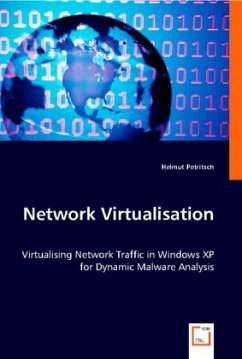Could dynamic Malware analysis be more dynamic by assigning network calls an injected result, defined by the analysis process? Yes, but only if the network access was completely virtualised. This book explains how this virtualisation could be achieved. It starts with an instruction of dynamic Malware analysis and the usage of sockets in the Windows operating system. By using Qemu and TTAnalyze (a tool for dynamic Malware analysis), it describes how network access could be virtualised, so that system calls relating to sockets (and therefore accessing the network) are intercepted at the system call gate, then manipulated and imitated for a dynamic analysis. The book also defines the most important synchronisation techniques of multi-threaded applications for their (network) activities. The reader will gain a thorough understanding, of how high level functions of the Winsock library are executed with the aim of system calls.
Bitte wählen Sie Ihr Anliegen aus.
Rechnungen
Retourenschein anfordern
Bestellstatus
Storno








